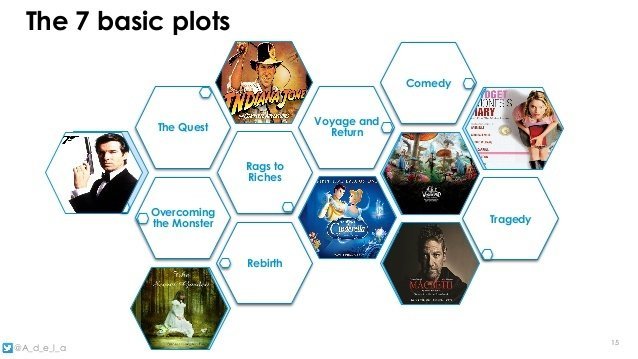Did you know there are only 7 stories we tell? Forgive me for getting a bit academic for a moment, but my Master’s Thesis centered on Narrative. Effectively, in thousands of years, the framework and “formula” for 7 different stories, represent every story ever told.
What is your favorite story? Lord of the Rings? That’s known as “The Quest” and is the same formula used by Raiders of the Lost Ark, Homer’s Odyssey, and Don Quixote typically seeing our hero, often accompanied by sidekicks, traveling in search of priceless treasure while needing to defeat evil (whilst overcoming powerful odds) which concludes when they find the treasure (and often the love interest).
Quests not your speed? No problem. Perhaps you like “Rebirth” stories, such as A Christmas Carol, Groundhog Day, Sleeping Beauty, or (my favorite) The Shawshank Redemption.
Regardless of your personal taste in stories, your favorite tale has been told before. A lot. Yet, we still tell stories, don’t we? In fact, you will find a need for storytelling and a desire for storytellers in every swath of life. Thousands of books can be purchased right now on Amazon regarding how to tell better stories as a business, within an education context, as a parent, for non-profits, to make money, and many, many more. Why?
Because stories are how we relate. Even though the plots are the same, we find attributes and conditions that we associate with or which we want to associate and we (literally) place ourselves in the position of a character. This is why I loved “The Firm” (a ‘Rags to Riches‘ story) when I read it, but wasn’t quite as excited by the movie. As I read through the pages, never once did I imagine Tom Cruise as the hero. I wasn’t secretly hoping Mr. Cruise would get the film nod. It has nothing to do with Cruise, whose movies I generally enjoy! No, this is about the main character. In my mind, the person being chased by bad guys, running around the Caribbean, kissing the pretty girls was….well, it was ME! (Yet Hollywood never called…)
So, as stories matter to all of us, it is with great excitement that I share OUR story: The campus narrative.
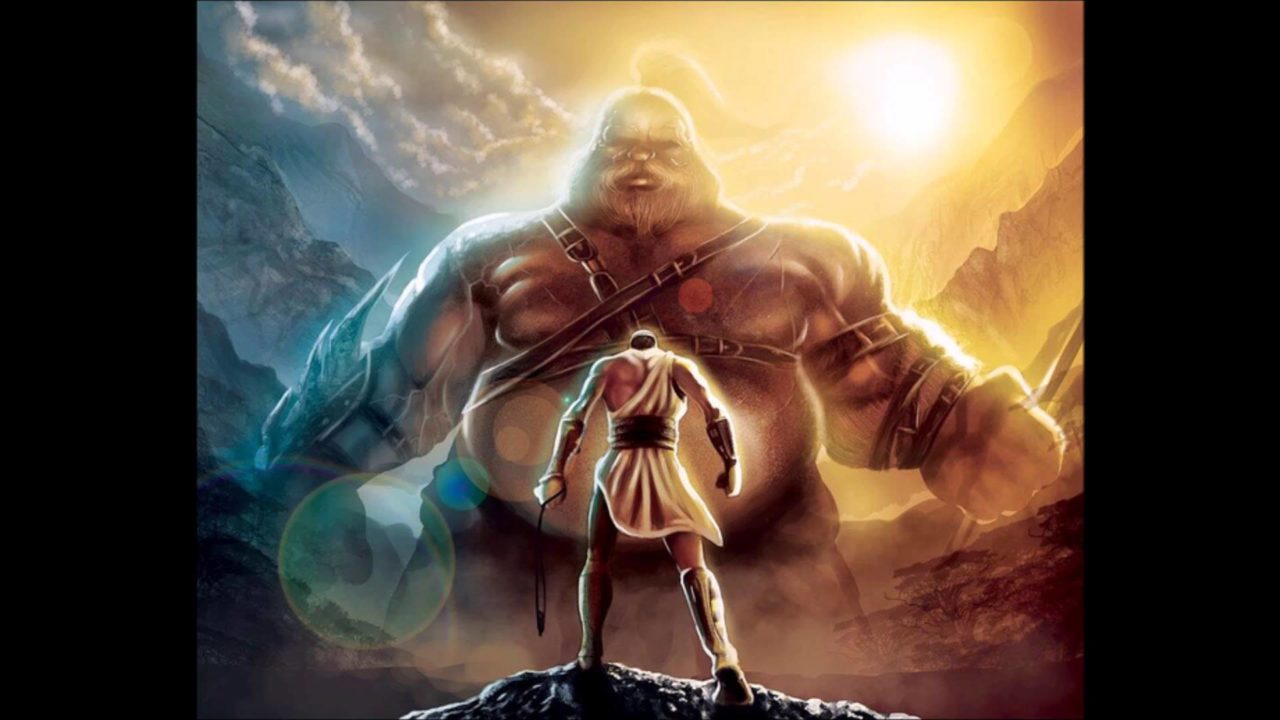
To start, we must talk about conflict. Our story has disequilibrium. It is simple and actually found in our company’s vision statement: Our partners don’t have students who can’t succeed. And yet…
A lot of ed tech companies steer toward the quest narrative or perhaps occasionally the voyage and return plot, but we don’t see things that way. We believe our story’s conflict has a monster at the center Our story is about a giant. It is about a frightening creature who must be slain. Our tale is about the gorgon that is failure.
Failure is an ugly word. It is a word I personally hate. Yet if you check any dictionary, it is the antonym – the evil opposite – of success. And success is ultimately what we are all after, isn’t it?
Success, to me, comes in many forms. I have liberal arts roots, after all, so success is not merely financial. Success is personal to each person, yet it is not ambiguous nor amorphous. Success is tangible.
Success may be a satisfied family experience, a job you love, a promotion, a free and clear house, happy kids, and for some, yes, success is a Porsche in the garage. To each their own.
But failure… Failure is ugly. Failure is hurtful. Failure is sometimes debilitating. While a failure is not indicative of a whole person (one who fails is not a failure! We all fail after all!), failure has a tendency to make a person feel like that is exactly what they are. And when it comes to student success (educational achievement) failure is absolutely the enemy. Note this is not about failing a class. I have blogged extensively about grading and academic failure. No, this monster is not that sub-category of failure.
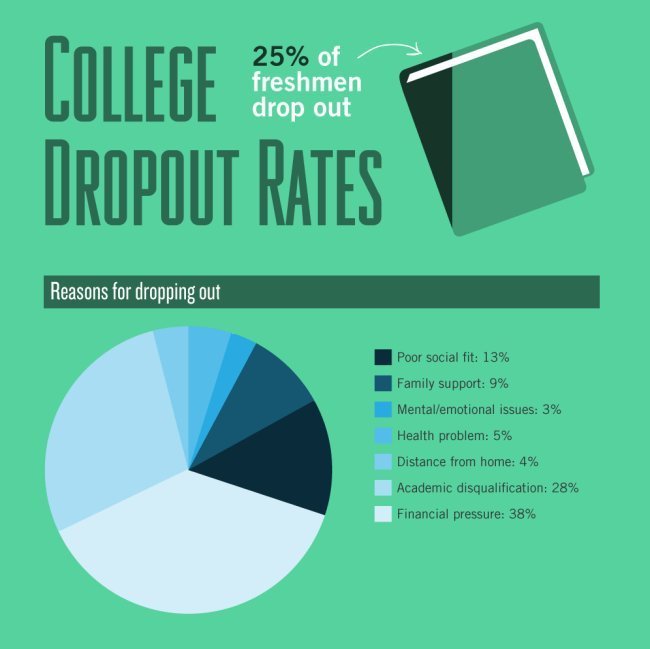 I am talking about failure to achieve, failure to succeed, failure to learn, and failure to flourish. Failure in that context may not be academic at all. Most people have come to accept that educational failure is roughly 25% academic, but 75% non-cognitive. So what drives non-academic failure? (Or perhaps worded appropriately, what drives both non-academic and some academic failure?)
I am talking about failure to achieve, failure to succeed, failure to learn, and failure to flourish. Failure in that context may not be academic at all. Most people have come to accept that educational failure is roughly 25% academic, but 75% non-cognitive. So what drives non-academic failure? (Or perhaps worded appropriately, what drives both non-academic and some academic failure?)
Loneliness. Depending on which studies you read, loneliness may be responsible for 7-8% of higher education attrition. And dropping out almost inevitably leads to debt (sometimes crushing debt), a significant slow-down regarding goal achievement, social mobility, and bruises to esteem or social perception.
Mindset. Particularly troublesome for first-generation college / university students, the lack of belief in self trickles beyond a person’s (incorrect) assumption that they are not a “numbers person” or that they cannot possibly “learn” a second language. Issues contradicting a growth mindset can be as foundational as, “I am not a college person” or “I don’t belong here.” Many of those students have no role models nor support at home, often hearing, “I told you our family wasn’t college material” and other debilitating statements from parents or grand-parents also suffering from a fixed mindset.
Autonomy. Socialness is a serious and legitimate desire for all people, not just students. Our brains actually seek out and thrive when tasks include a healthy social component. We live in a more collaborative, team-driven society than ever before. There is a reason collaboration is now a top five desire of employee hiring managers. Even two decades ago, teams were rarely interdependent. Work based groups did work in parallel far more than interdependently. But not so today. Obvious from how television has evolved. 50 years ago, tv stations had the hero doctor saving a town or the lone litigator convincing criminals to confess in court. Today, we see teams of experts who have one another’s backs in the ER and we see interdependent legal professionals that now include forensic science, law enforcement, as well as persuasive lawyers working hand in glove. Yet in the classroom, the lone lecturer at the front is still the lone lecturer at the front. And group projects across higher education are far more of a nuisance (for both the professor and the student) than a way of being.
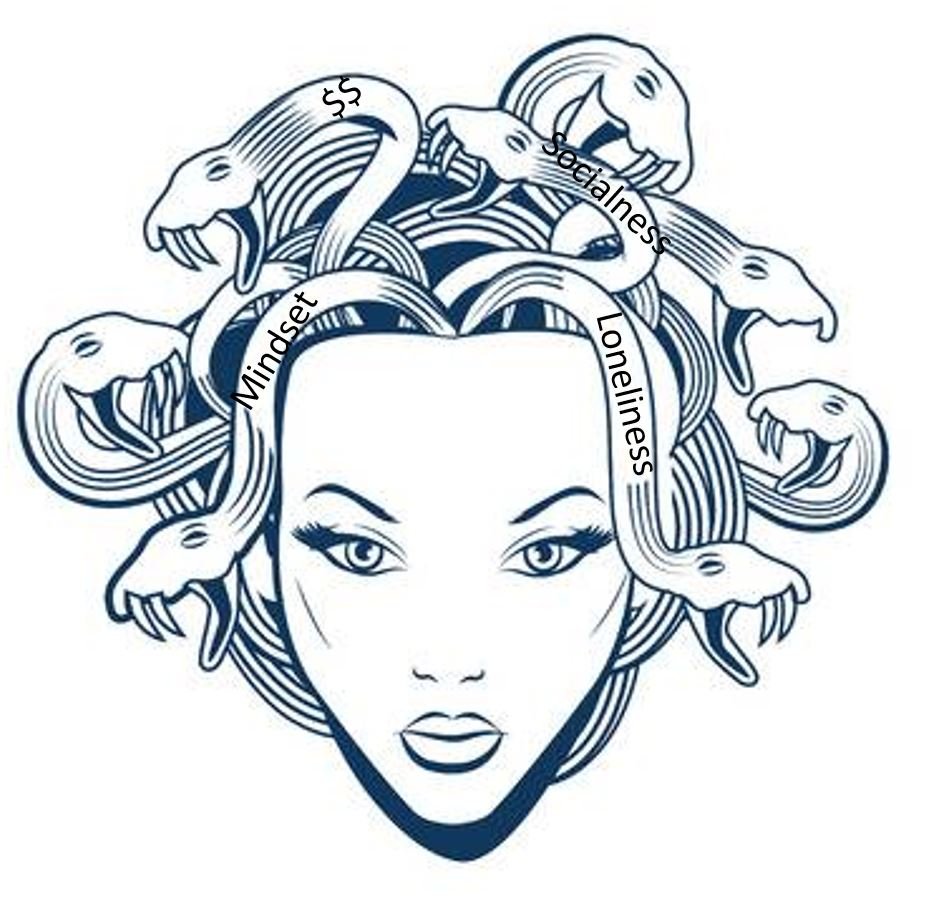 Each of these non-cognitive factors, and dozens (hundreds?) more give power to the giant of failure. They are like arrows in the giant’s quiver or poisonous shots of saliva coming from the monster’s mouth. They feed the monster and help it grow. They are each a snake on Medusa’s head, snapping and biting in a 360 degree position. And while they are not necessarily academic, even those non-cognitive factors can impact or impede academic success. After all, a hungry student is less concerned about a test and more concerned about a meal. A student with a healthy mindset as well as tenacity might actually start to apply individual learning in classes, promoting critical thinking or problem solving, rather than just being a good test taker. But a student who cannot see the connections between learning and life, can at best become a good student, but not likely a satisfied, successful person beyond that context. At least not for some time.
Each of these non-cognitive factors, and dozens (hundreds?) more give power to the giant of failure. They are like arrows in the giant’s quiver or poisonous shots of saliva coming from the monster’s mouth. They feed the monster and help it grow. They are each a snake on Medusa’s head, snapping and biting in a 360 degree position. And while they are not necessarily academic, even those non-cognitive factors can impact or impede academic success. After all, a hungry student is less concerned about a test and more concerned about a meal. A student with a healthy mindset as well as tenacity might actually start to apply individual learning in classes, promoting critical thinking or problem solving, rather than just being a good test taker. But a student who cannot see the connections between learning and life, can at best become a good student, but not likely a satisfied, successful person beyond that context. At least not for some time.
 In our story, the giant is obvious and tenacious. But who are the other characters? Our heroes are also obvious. They are the faculty, staff, administrators, counselors, advisers, and even student leaders who are helping the masses of other students gain control, footing, perspective, strength, and more. The President who is bolstering student mindset, the Dean who has circled the wagons of departments promoting genuinely modern and better teaching practices, the student affairs staff member who is helping connect student work to financial help through work study; these are our heroes.
In our story, the giant is obvious and tenacious. But who are the other characters? Our heroes are also obvious. They are the faculty, staff, administrators, counselors, advisers, and even student leaders who are helping the masses of other students gain control, footing, perspective, strength, and more. The President who is bolstering student mindset, the Dean who has circled the wagons of departments promoting genuinely modern and better teaching practices, the student affairs staff member who is helping connect student work to financial help through work study; these are our heroes.
While it is true that the monster likely has a few allies within the ranks of education, like professors who still feel it is their job to “weed out” the weak, like staff members who are easily frustrated by student requests, or by administrators who worry solely about their own vertical, ensconcing deeper and deeper silos, these are not our heroes.
No, our heroes are constantly seeking new ways to engage, new methods to promote success, and new processes by which to connect learning to life. Our champions want to help struggling students find support, financial help, learning assistance, and even a vision for their own future. While our super-heroes do not wear a cape, they do most of their “saving” via networks, by working around, through, or even over siloed thinking. They leverage time, energy, and trade favors like baseball cards. They want to do right by students and they create life hacks over and over to accomplish exactly that.
But just because we have heroes and a monster does not mean our story will end happily. The last several decades have shown that despite our champion’s best efforts, the monster is gaining traction. Enrollment rates are declining, retention rates are dropping, alumni affinity is at an all time low, and the financial burden of students is shared by institutions which struggle to find revenue models that will grow. Except for a few elite schools, the majority of heroes need some help to accomplish their mission.
 Enter Campus. No, we do not consider ourselves heroes. We exist to support the courageous. Like Batman’s utility belt or Spider-Man’s webbing, we are the connective tissue that binds the hero with those in need of help. Like the ultimate “super-rope”, Campus can help connect student leaders with students in need of a north star. Campus can foster genuine community with alumni, tearing down the walls of region or job sector, and promoting affinity. Campus helps enrollment specialists weave a safety net for prospects, ensuring a connected, engaged, yet highly functional experience. Campus provides rope to scale out of silos or build rope bridges across them, so that the current student experience includes visibility, transparency, and the ability to support students socially, promoting real interdependence, while sharing the burdens of help and aid.
Enter Campus. No, we do not consider ourselves heroes. We exist to support the courageous. Like Batman’s utility belt or Spider-Man’s webbing, we are the connective tissue that binds the hero with those in need of help. Like the ultimate “super-rope”, Campus can help connect student leaders with students in need of a north star. Campus can foster genuine community with alumni, tearing down the walls of region or job sector, and promoting affinity. Campus helps enrollment specialists weave a safety net for prospects, ensuring a connected, engaged, yet highly functional experience. Campus provides rope to scale out of silos or build rope bridges across them, so that the current student experience includes visibility, transparency, and the ability to support students socially, promoting real interdependence, while sharing the burdens of help and aid.
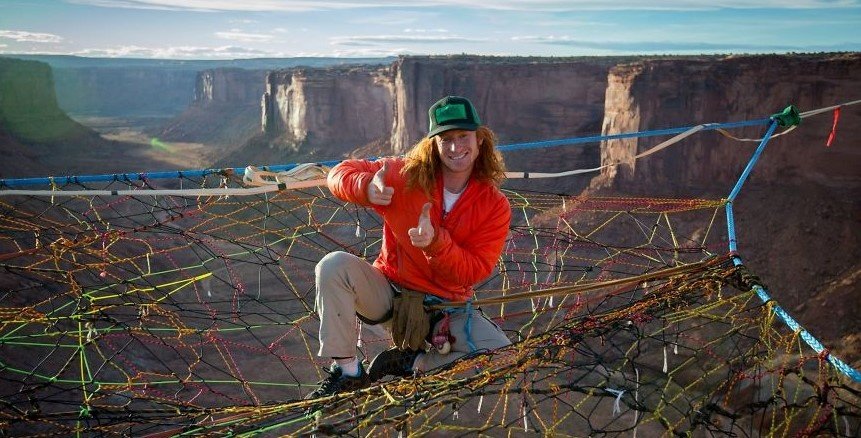 Like Aladdin’s magic lamp or Perseus’ magic shield, our goal is to give staff, faculty, and even students the ability to help one another build nets, ascend the tallest mountains, and eventually, wrangle the giant. But just as any tool is only as powerful as its user, here is where our story stops. It is not over, but we are at a crossroads. The arc plot is in full swing. The moment of disequilibrium has already occurred and the exposition is in full motion, building anticipation and anxiety as to whether or not this monster can truly be brought down.
Like Aladdin’s magic lamp or Perseus’ magic shield, our goal is to give staff, faculty, and even students the ability to help one another build nets, ascend the tallest mountains, and eventually, wrangle the giant. But just as any tool is only as powerful as its user, here is where our story stops. It is not over, but we are at a crossroads. The arc plot is in full swing. The moment of disequilibrium has already occurred and the exposition is in full motion, building anticipation and anxiety as to whether or not this monster can truly be brought down.
That is the Campus story. But that is also likely YOUR story. However our story is not done. It’s not a cliff-hanger, it’s simply not finished. We have no moments of “a-ha” or Dénouement. Not yet. Instead, we continue in the exposition, driving toward some kind of conclusion. As that happens, we look forward to seeing the various ways you will use our system to topple this giant. We believe the monster has no place in our students lives and we cannot wait to support your efforts to slay it. But now it is up to you. We will do what we can to make it as easy as possible. We have partnered with a consulting firm who will help not only cover first year costs, but also with implementation expertise. We have curated some true leaders in the education technology space, and are about to unleash them as a product advisory board. We have combined the power of a social system with the functionality of a portal. We have even priced for growth, tying a mobile app with a portal so cash-strapped institutions don’t have to choose one or the other, yet get both for less than the cost of either.
Let us help you make this a story of triumph and success. Let us support you as you slay this giant, taking the monster out before another generation feels its sting. Let’s create the happiest of endings for our students together.
Dr. Jeff D. Borden
Chief Academic Officer
Campus.app
